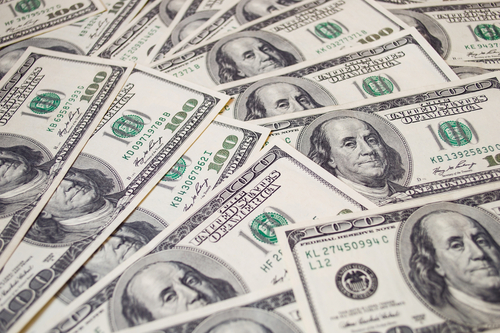

This article is only available to Macro Hive subscribers. Sign-up to receive world-class macro analysis with a daily curated newsletter, podcast, original content from award-winning researchers, cross market strategy, equity insights, trade ideas, crypto flow frameworks, academic paper summaries, explanation and analysis of market-moving events, community investor chat room, and more.
Summary
- The fiscal stance has tightened since January, but this seems unlikely to last as some expenditure cuts are being litigated.
- Also, the increase in US tariff revenues has slowed considerably.
- Tariffs provide the Trump administration with additional policy flexibility, which it could use to implement stimulus if growth remains slow (my base case).
- Long term, tariffs could generate enough revenue to keep the deficit on the pre-One Big Beautiful Bill (OBBB) baseline, but even that base line may not place US public finances on a sustainable path.
Market Implications
- I still expect two-three 2025 cuts and at most one 2026 cuts against markets pricing 2.4 and almost three cuts, respectively.
Improvement in Deficit May Not Last
Here, I discuss recent developments in fiscal policy as well as FY2026 and long-term prospects.
The federal fiscal stance has turned restrictive since end-2024 (Chart 1). This is based on quarterly GDP data on federal spending and estimates of net transfers. Monthly budget data confirms this finding. In July, the 12m deficit was 0.8ppt of GDP below January’s level, due in roughly equal parts to revenue increases and expenditures cuts (Chart 2).
The deficit reduction is positive for fiscal sustainability but negative for short-term growth. It has likely contributed to the growth slowdown, already driven by higher precautionary savings and consumer debt consolidation.
It is unclear how sustainable the improvement in the deficit is. The decline in expenditures partly reflects the impounding of spending previously approved by Congress and is under litigation.
The OBBB will add to the deficit long term, but this could be offset by higher tariff revenues.
| Chart 1: Fiscal Policy Turns Restrictive | Chart 2: Deficit Has Improved |
Will Tariffs Fund the OBBB?
The recently voted OBBB lowers budget revenues and expenditures and increases the deficit over the next 10 years by an average of 1ppt of GDP a year, relative to the CBO January 2025 base line (the CBO is an independent agency that scores budget and other laws; Charts 3 and 4). The baseline assumed the expiration of the TJCA tax cuts at end CY2025, so the OBBB increases the deficit by ‘only’ about 1/2ppt of GDP relative to the current policy baseline.
Charts 3 and 4 show CBO estimates that do not take into account the impact of tax cuts on growth, so are likely to be conservative. While tax cuts boost spending and growth, it is generally agreed the boost is not large enough to make the cuts self-funding.
However, the OBBB assumes no change in tariff policy and the CBO scoring therefore does not consider additional revenues from the administration’s tariff policies.
How much could the administration’s tariffs raise? Tariff revenues have increased every month but at a decreasing pace. I was surprised by the limited increase in tariff revenues in July, $1.1bn to $27.7bn (Chart 5). The low print could reflect a decline in imports (July imports will be released on 29 August). In turn, a decline would reflect the growth slowdown and/or import normalisation following the sharp Q1 increase (Chart 6).
Regardless, the low July print made me revise down my tariff revenues estimates to $30bn/month in August and September from previously $40bn. The revision would bring the FY2025 deficit to 6% of GDP, against 6.4% in FY2024.
In FY2026, if the growth slowdown persists, the administration may implement fiscal stimulus. This stimulus could take the form of e.g., tariff rebates.
Table 1 shows a FY2026 budget scenario that assumes 1/2ppt of GDP in additional spending relative to OBBB and tariff revenues of $35bn a month. This would bring the budget deficit to 6.5% of GDP, against 7% under the OBBB and 5.5% under the CBO’s January 2025 baseline. The bottom line is tariffs give the administration additional policy flexibility, especially since tariff policy is entirely under the control of the executive branch (or at least until courts rule on the ongoing lawsuit, likely to end at the Supreme Court).
Long term, could tariffs raise enough income to keep the budget deficit on the CBO’s January 2025 baseline? Probably. In FY2024, tariff revenues represented about $80bn. Under the reasonable assumption of $35bn monthly tariff revenues, these would bring an additional one ppt of GDP in revenues.
However, the CBO’s baseline shows a marked worsening of the deficit after FY2027. Putting US public finances back on a sustainable track is likely to require more than tariff increases, (for a discussion of long-term fiscal sustainability, please read my Treasury Crisis Pre-Mortem).
Table 1: Tariff Increase to Partly Fund OBBB Deficit Increase
| Chart 3: OBBB Cuts Taxes and Spending | Chart 4: Bigger Deficits Under OBBB |
| Chart 5: Tariff Revenue Growth Is Slowing | Chart 6: Goods Import Growth Is Slowing |
Market Consequences
Tariffs provide the administration with additional policy flexibility. If growth remains low next year, the administration could implement fiscal stimulus.
I still expect two-three 2025 cuts and at most one 2026 cuts against markets pricing 2.4 and almost three cuts, respectively.
The commentary contained in the above article does not constitute an offer or a solicitation, or a recommendation to implement or liquidate an investment or to carry out any other transaction. It should not be used as a basis for any investment decision or other decision. Any investment decision should be based on appropriate professional advice specific to your needs. You are not permitted to publish, transmit, or otherwise reproduce this information, in whole or in part, in any format to any third party without the express written consent of Macro Hive. This includes providing or reproducing this information, in whole or in part, as a prompt.)
